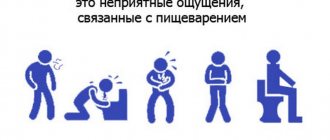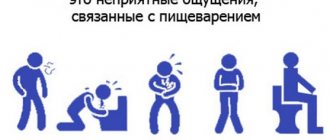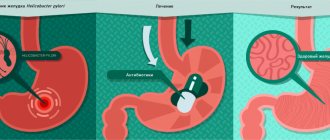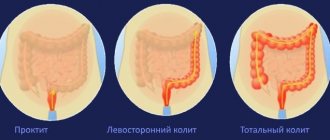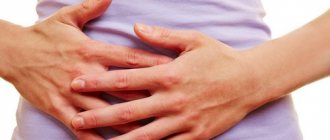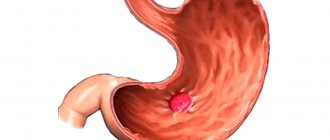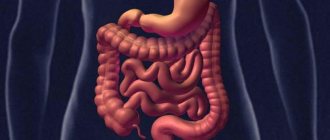The modern rhythm of life does not always allow us to adhere to food culture. Snacks on the run, late dinners, eating fast food - our body tolerates all this for the time being, periodically giving distress signals in the form of rumbling and pain in the stomach, heaviness, and flatulence. Who among us has not experienced such manifestations and who has seriously paid attention to it? Certainly not many. But in vain. All these signs may indicate the development of dyspepsia in the body - a pathology that is the background for the occurrence of serious diseases of the gastrointestinal tract.
In our article we will deal with issues related to dyspepsia. Let's find out how pathology is related to such a phenomenon as the rotting of proteins in the intestines. We will also consider the causes and treatment of the disease in the materials of the article. Let's try to understand what can be done to maintain health and avoid such pathology.
What is dyspepsia?
Dyspepsia is a disease of the gastrointestinal tract associated with indigestion.
Pathology occurs due to nutritional disorders and can often manifest itself due to insufficient amounts of digestive enzymes in the body.
Dyspepsia is a disease that is a consequence of a disease of the gastrointestinal tract and in itself is not fatal, but significantly reduces a person’s quality of life. The consequences of dyspepsia can be such phenomena as the rotting of proteins and amino acids in the intestines, the processes of food fermentation in the intestines, etc.
Depending on what type of enzyme is missing, there are:
- cholecystogenic dyspepsia - a disease resulting from impaired bile secretion;
- hepatogenic dyspepsia – the result of liver diseases;
- gastrogenic dyspepsia – a pathology resulting from disorders of the stomach;
- pancreatogenic dyspepsia – a consequence of a lack of pancreatic enzymes;
- enterogenous dyspepsia – a pathology that occurs due to disturbances in the secretion of intestinal juice;
- mixed dyspepsia is a pathology that combines the signs of several of the above varieties of the disease.
If left untreated, the pathology becomes chronic and can provoke serious functional disorders of the body, for example, metabolic imbalance - a fatal phenomenon for patients with diabetes, etc.
Putrefactive dyspepsia: how does it manifest itself and what does the symptom complex mean?
Putrefactive dyspepsia is a symptom complex in which, due to a deficiency of enzymes, the digestion of the protein part of food occurs. This condition is also called yeast dyspepsia, since the processes are accompanied by fermentation and increased gas formation.
The pathology is accompanied by severe symptoms from the digestive tract and a violation of the patient’s quality of life.
Symptoms
Putrefactive dyspepsia is accompanied by many signs that manifest themselves both from the digestive organs and from general clinical symptoms. The patient's complaints are always unstable and varied. The pathology often mimics other diseases, which makes diagnosis and timely therapy difficult.
Symptoms are seasonal - the condition worsens more often in the autumn-spring period. Exacerbations often occur in the morning and smooth out as the day progresses. The disease is chronic; acute processes are extremely rare and quickly resolve without specific therapy.
Intestinal manifestations
Among the symptoms indicating a disorder of the digestive system are:
- belching;
- nausea;
- uncontrollable vomiting of food;
- spasmodic pain in the abdominal area (intestinal colic);
- rumbling along the intestines;
- tenesmus (false, painful urge to defecate that does not produce results);
- loose, foul-smelling, dark-colored stools;
- flatulence and severe bloating;
- feeling of heaviness in the abdomen.
Digestion process
A simplified process of digesting food looks like this. From the oral cavity, food enters the stomach, where it begins to break down under the influence of gastric juice and hydrochloric acid. Food is digested and partially enters the bloodstream through the walls of the stomach. Since the food mixture interacts with hydrochloric acid in the stomach, the balance of acid and alkali in the organ changes - acidity in the stomach increases. However, the pH level returns to normal after the digested food enters the small intestine.
The passage of processed food from the stomach to the intestines is carried out through the pyloric valve, which periodically opens and closes with constant changes in the environment in the small intestine.
Excess acidity is neutralized by intestinal juices. Due to the neutralization of intestinal contents, the pH level periodically changes from alkaline to acidic and vice versa.
The stomach and small intestines (albeit for a short time) are protected by increased acidity from putrefactive microflora, which contributes to the rotting of decay products. In these parts of the digestive tract there are no microbes, including putrefactive ones.
Due to insufficient enzymes, food is not completely digested. The decomposition products undergo pathological processes, the formation of toxic products of rotting proteins in the intestine occurs, accompanied by the release of gas.
Kinds
Classification of putrefactive dyspepsia.
Forms of the disease:
- Spicy.
- Chronic – sluggish form, with periodic exacerbations.
The acute form of dyspepsia is usually distinguished by the following characteristics.
By origin. Due to:
- dysfunction of the gastrointestinal tract;
- complications after infectious diseases;
- inherited pathologies;
- constitutional, anatomical features of the structure of internal organs.
According to the location of the inflammatory process.
Locations of damage:
- stomach with small intestine;
- small intestine;
- total damage to all parts of the intestine;
- the entire digestive tract from the stomach to the lower parts of the large intestine.
According to the degree of organ damage:
- 1st degree – no intoxication or dehydration;
- Grade 2 – there are mild signs of symptoms of dehydration and internal intoxication;
- Grade 3 – symptoms of dehydration and internal intoxication are clearly expressed.
The chronic form affects people of any age.
Relapses occur when the diet is violated by heavy food lovers or from inadequate treatment.
In the classification of the chronic form of dyspepsia, it is customary to distinguish degrees:
- Mild – symptoms of dehydration are noticeable, there is no intoxication.
- Medium – metabolic reactions in the body are disturbed. Noticeable weight loss.
- Severe – the daily amount of urine excreted decreases, blood pH shifts to the acidic side, and neurotic disorders are observed.
Types of dyspepsia
Any food consists of proteins, fats and carbohydrates. The percentage of these substances in different products is different. Therefore, a person’s diet should be varied - he should receive all three components with food. However, the abuse of any products can cause disruptions in the digestive system and lead to the development of dyspepsia.
There are three forms of the disease:
- Putrefactive dyspepsia is a type of pathology that develops as a result of excessive consumption of protein, especially protein that takes a long time to digest. This could be red meat, pates, sausages. A favorable environment is created in the body for the development of putrefactive microflora, which causes rotting of proteins in the intestines. Treatment of this form of dyspepsia is aimed primarily at unloading the gastrointestinal tract and restoring the balance of normal intestinal microflora.
- Fermentative dyspepsia occurs with excessive consumption of foods containing carbohydrates. These include flour products, sweets, cabbage, legumes, honey, as well as mash, kvass, and pickled vegetables. Such products contribute to the development of fermentation microflora, which results in fermentation in the digestive chain.
- Fatty dyspepsia is a type of pathology that develops against the background of increased consumption of foods containing large amounts of fat. These include pork or lamb lard. Fat dyspepsia is sometimes called soap dyspepsia.
How to influence the intensity of fermentation
To eliminate fermentation in the intestines, first of all, it is necessary to balance the diet. You should limit the consumption of foods that increase gas formation. These are beans, peas, lentils, cabbage, radishes, radishes, raw vegetables and fruits, coffee, cocoa.
A diet is required regardless of what caused the gas formation
Also, herbs and spices, such as pepper, rosemary, cumin, thyme, and vinegar, can contribute to flatulence. Gas production in the intestines increases due to foods containing sugar and starch, so you should give up sweets, flour, potatoes, and fresh bread.
The menu should include lean meats and fish, fermented milk products, cottage cheese, cereals, soups, eggs. Herbal decoctions of dill, chamomile, walnut leaves, lemon balm, peppermint or pomegranate peel will help cope with excessive gas formation.
And although some restrictions are introduced, a person must still consume a sufficient amount of proteins, fats and carbohydrates. Lactic acid bacteria destroy putrefactive bacteria that populate the large intestine, and fiber and foods rich in pectin increase intestinal motility and help remove toxins and toxic substances from the body.
A nutritionist will help you balance your diet. In addition to reviewing the diet itself, it is also necessary to pay attention to the diet. It is recommended to eat small portions, but often. Optimally four times a day, at approximately equal time intervals.
So, food will be digested better. The process of breaking down carbohydrates begins in the mouth, so food must be chewed thoroughly. Physical activity improves digestion because it accelerates intestinal motility and relieves emotional stress.
Therapeutic gymnastics will speed up the passage of gases, helping to accelerate peristalsis.
Causes of development of putrefactive dyspepsia
Putrefactive dyspepsia develops not only as a result of excessive consumption of foods high in protein. The cause of the pathology can be stale meat products, as well as a low amount of enzymes in the body - intestinal proteases, pepsin, trypsin. Enzyme deficiency is often caused by a person's lifestyle, but can sometimes manifest itself as a congenital defect.
If there is a lack of substances that decompose proteins in the body, or there is a lot of protein food, then it does not completely decompose, but enters the large intestine in a semi-processed form. There it decomposes, but not under the influence of normal microflora, but under the influence of opportunistic microflora.
The latter, developing rapidly, suppresses the normal environment and contributes to the occurrence of dysbiosis, and opportunistic bacteria penetrate into the lower parts of the small intestine and trigger rotting processes in it.
The putrefaction is aggravated by additional proteins that are secreted by the intestinal walls during increased peristalsis. During the decay process, toxic substances are formed that are absorbed into the blood and cause intoxication of the body. The main task in the treatment of dyspepsia is to find a way to stop the rotting of proteins in the intestines. And ways to neutralize toxic products in the body also need to be determined.
It is important to remember that, within reasonable limits, eating the above foods does not lead to pathological disorders in the body. However, an excess of such food or eating it in the evening, when intestinal activity decreases, causes undesirable consequences and has a negative effect on the body.
Causes
Predisposing factors that can lead to the development of putrefactive dyspepsia include:
- sedentary lifestyle;
- stressful situations;
- chronic diseases of the digestive tract.
Eating disorder
Among the main reasons, nutritional disorders occupy an important place:
An abundance of food leads to decompensation of the digestive glands, which do not have time to synthesize enzymes for such a volume of food.
Binge eating.- The predominance of protein foods over plant foods. An unbalanced diet leads to enzymatic deficiency against the background of intestinal atony, since plant foods, due to the abundance of fiber, can stimulate peristalsis. This enhances the processes of decay and fermentation, and provokes the development of dysbiosis.
- Eating expired foods. Most often, putrefactive dyspepsia accompanies food poisoning, when toxins enter the gastrointestinal tract with food and provoke the development of rotting and fermentation processes, inactivation of enzymes.
Enzyme deficiency
Enzyme deficiency is most often observed with organic or functional disorders of the gastrointestinal tract itself:
- Pancreatitis. Inflammation of the pancreas of any etiology (alcoholic, infectious, cryptogenic) leads to a decrease in the function of glandular cells and a decrease in the secretion of pancreatic enzymes. Pancreatic enzymes (pepsin, trypsin, protease) promote protein digestion.
- Aminoacidopathy. Genetic pathology accompanied by a total disruption of amino acid synthesis. This leads to disruption of the synthesis of enzymes involved in protein digestion.
- Crohn's disease. A chronic autoimmune disease that is characterized by ulceration of mucosal areas throughout the gastrointestinal tube. Glandular cells are also affected. This leads to a deficiency of enzymes capable of digesting proteins.
- Phenylketonuria. Deficiency of the liver enzyme phenylalanine leads to impaired breakdown of amino acids.
- Celiac disease. A congenital pathology in which there are not enough villi in the small intestine capable of transport and exchange between the lumen of the gastrointestinal tube and the human body. This leads to increased decay processes of unabsorbed protein substances.
Symptoms
As noted earlier, dyspepsia is a background for the development of diseases of the digestive tract, therefore the signs of pathology are similar to the symptoms of gastrointestinal disorders. Manifestations of functional dyspepsia depend on the type of pathology.
Fatty dyspepsia, for example, is manifested by heaviness in the stomach, belching, and flatulence. Patients report abdominal pain that worsens when eating. The stool is quite copious and often contains inclusions of undigested food.
Fermentative dyspepsia is characterized by strong rumbling in the intestines and flatulence. Patients note pain in the upper abdomen, as well as frequent trips to the toilet. In this case, the stool has a sour odor and a liquid consistency. Fermentation in the intestines also results in frequent constipation.
Symptoms of fermentation should never be ignored. Lack of proper treatment leads to gradual contamination of the intestinal walls. At the same time, the protective film of the mucous membrane ceases to be produced, which will subsequently allow pathogenic bacteria to become active. Over time, fecal stones form in the intestines.
Patients suffering from fermentation dyspepsia also note an external sign of the disease - the so-called “fecal” belly. It occurs due to the fact that the intestines sink down under the weight of unprocessed food.
How fermentation in the intestines affects the body
It is considered normal if there is up to 0.9 liters of gas in the intestines. Increased gas formation (flatulence) leads to pain and heaviness in the abdominal area, bloating, and abnormal bowel movements. Episodic accumulation of gas also occurs during normal functioning of the gastrointestinal tract, for example, after foods that increase gas formation, or as a result of overeating, when there is not enough time to digest food.
But if flatulence is a constant concern, then this indicates a pathology of the stomach, small intestine or pancreas. Moreover, the reasons can be organic or functional. So, flatulence can occur as a result of:
Bloating in the lower abdomen
- microflora disorders. If the number of opportunistic microorganisms in the intestine exceeds the number of beneficial bacteria, then food digestion occurs with increased gas formation;
- deterioration of gas removal. Occurs if there is something that acts as an obstacle to the gas. It could be a tumor, fecal stones, helminths;
- decreased peristalsis. The movement of food is slowed down, so the fermentation process begins;
- dysphagia. Air can enter the stomach and intestines through the mouth during swallowing. Some of this air comes out through the mouth (belching), but some remains and can cause discomfort.
Increased gas formation leads to the appearance of:
- abdominal pain (caused by stretching of the intestinal walls or spasm);
- bloating (occurs due to an enlarged abdomen);
- rumbling (gas mixes with liquid contents of the intestines);
- belching (if fermentation or rotting begins in the stomach, then air with an unpleasant odor may escape through the mouth);
- nausea (due to toxins contained and products of incomplete breakdown of food);
- chronic constipation (if the balance of intestinal microflora is disturbed and there is a lack of mineral salts and an excess of undigested food, then the composition of feces is disrupted, which leads to a slowdown in the movement of food through the intestines);
- chronic diarrhea (occurs due to the fact that the toxic contents of the large intestine cause increased secretion of water and electrolytes into the intestinal lumen).
Fermentation and putrefaction in the intestines, which contribute to increased gas formation, accompanies many diseases. Among them are fermentopathy, gastritis, peptic ulcer, cholelithiasis, dysbacteriosis, colitis, pancreatitis, Crohn's disease, cholecystitis, cirrhosis, tumors, adhesions.
If fermentation in the intestines is the result of excessive consumption of carbohydrates, especially fiber, then they speak of fermentative dyspepsia. The disease occurs if a person adheres to a diet that limits the consumption of protein and fatty foods. Causes of the disease also include insufficient chewing of food, lack of enzymes, and increased peristalsis.
In the absence of certain enzymes or their inactivity, individual intolerance to certain foods develops
If lactase is not synthesized, then cow's milk is not broken down in the body. The protein enters the large intestine unchanged, where it begins to decompose, causing increased formation of water, gas and affecting the microflora.
To eliminate the symptoms of the disease, it is enough to remove milk from the diet, and in severe cases, fermented milk products, as well as butter.
It is imperative to consult a gastroenterologist if, in addition to flatulence, you have the following symptoms:
- nausea and vomiting;
- change in skin and sclera color;
- sudden weight loss;
- bloating due to medications;
- Abdominal pain appears regardless of the type of food consumed.
Manifestations of putrefactive dyspepsia
Dyspepsia of putrefaction leads to the release of toxic substances in the body, such as cresol, skatole, phenol. As a result of the reactions, gases are formed that cause flatulence. The gas tends to expand and put pressure on the intestinal walls, resulting in disturbances in the abdomen. The reason for this is the rotting of proteins in the intestines. Symptoms of the pathological condition are complemented by unpleasant colic and painful sensations. An inflammatory process develops in the intestines. The organ narrows, and “plugs” form in narrow places, which stretch the non-inflamed areas.
With putrefactive dyspepsia, intoxication of the body occurs, so the patient feels a loss of strength, weakness, and decreased performance. He may be bothered by dizziness and headaches, and sometimes during illness there is a slight increase in body temperature.
The pathology is also characterized by nausea and vomiting, bloating and pain in the abdomen, frequent mushy dark stools with a fetid, putrid odor.
Putrefaction dyspepsia takes two forms:
- chronic,
- spicy.
The acute form occurs after excessive single consumption of protein, for example after overeating kebab at a picnic. Such ailment is temporary and quickly goes away on its own or with the help of medications that contain enzymes.
Chronic dyspepsia indicates serious disorders of the gastrointestinal tract and requires diet, changes in habitual lifestyle, and drug intervention.
Treatment
Treatment of the disease involves several stages.
Drug treatment
- In order to block H2-histamine receptors, which reduce the amount of hydrochloric acid, stimulate the production of mucus that protects the walls of the stomach, and normalize motility, the following are prescribed: Ranitidine, Roxatidine, Famotidine, Metoclopramide.
- Preparations for neutralizing hydrochloric acid. Absorbed: Tums, Bourget mix, Rennie. Non-absorbable: Almagel, Maalox, Phosphalugel. The drugs have a quick but short-term therapeutic effect.
- Enzymes necessary for the digestive process: Abomin, Mezim, Pepsin, Pepsidal, Creon, Pancreatin.
- Drugs that reduce the secretion of gastric juice. Eliminate nausea and heartburn: Rabeprazole, Nolpaza, Pantoprazole, Lansoprazole.
- Prokinetics. To stimulate the motor function of the gastrointestinal tract. Used as antiemetics: Domperidone, Dimetpramide, Bromoprid.
- Antispasmodics. Relieves abdominal pain: Papaverine, Drotaverine, No-shpa.
There are many remedies, they all have different effects, so they should be prescribed by a doctor after a detailed examination of the patient.
Traditional medicine recipes
Digestive disorders in the initial stage can be easily treated using traditional medicine methods in combination with a healthy diet.
Cumin seed infusion
Brew half a teaspoon of raw material with a glass of boiling water and leave for about half an hour. Drink the infusion warm, before meals, a third of a glass, 3 times a day.
Shown:
- as a painkiller;
- to stimulate the production of enzymes, restore microflora;
- facilitates the passage of gases.
Mint and lemon balm
Brewed like tea. You can drink several times a day, at any time.
Action:
- relieve intestinal irritation and smooth muscle spasm;
- reduce pain and gas formation.
A mixture of honey and aloe
Grind honey and aloe leaves in a 2:1 ratio in a meat grinder. Keep refrigerated. Take a tablespoon before meals. Duration of treatment is from 2 to 8 weeks.
Decoctions prepared from herbal preparations have a good therapeutic effect on the intestines:
- chamomile;
- elecampane;
- wormwood herbs;
- yarrow;
- calamus;
- sage;
- valerian roots.
Diet
When symptoms of putrefactive dyspepsia appear, it is imperative to follow the diet and diet.
- The first day a complete refusal of food is prescribed.
- Over the next two weeks, completely eliminate protein foods from the menu.
- You need to eat often, in small portions - 5 or 6 times a day, at regular intervals.
- Drink 1.5 to 2 liters of water per day.
- Food consumed must be warm.
- Saturated broths and canned foods should be excluded from the diet. Also smoked meats, spices, sauces, fresh vegetables and fruits, gluten (vegetable protein, found in wheat).
- Drinks that are contraindicated include alcohol, carbonated drinks, coffee, tea.
- Limit your consumption of dairy products.
Throughout the entire rehabilitation period, it is advisable to drink still mineral water.
Diagnostics
Screening for dyspepsia is quite varied and includes many components. In addition to a doctor’s examination, there are laboratory diagnostic methods that reveal the decay of proteins in the large intestine - biochemistry, OAC, as well as instrumental research techniques.
During the examination and conversation, the doctor determines symptoms that may indicate the patient has diseases of the gastrointestinal tract, draws up a general picture of the patient’s health status, and decides which diagnostic methods to resort to.
In almost all cases, the patient is sent for a general urine and blood test. Often, a patient is given a detailed blood test if there is a suspicion of protein decay in the large intestine (biochemistry).
To determine the type of dyspepsia, an analysis of the patient's stool is performed. Sometimes a breath test or stool antigen test is required. A breath test allows you to determine the type of microorganisms that lead to disturbances in the digestive tract.
The occurrence of dyspepsia is evidenced by a large number of unprocessed muscle fibers in the feces; feces contain ammonia and have an alkaline reaction. In a healthy state, the environment should be acidic.
Stool analysis helps to distinguish dyspepsia from an inflammatory process in the intestines - in the case of the pathology in question, there are no red blood cells, white blood cells and mucus in the biological material being studied.
The diagnosis is also confirmed by diseases of the gastrointestinal tract - intestines, stomach, pancreas - identified during instrumental examination methods.
Instrumental research techniques
In order to correctly prescribe a treatment regimen to a patient, it is necessary to establish which organ of the gastrointestinal tract has malfunctioned. After laboratory tests are carried out, if protein decay in the intestines is suspected (biochemistry, OAM, OAC), instrumental research methods are started. At this stage, it is necessary to exclude from consideration organic diseases with symptoms similar to dyspepsia.
The range of research conducted today is diverse. The most common examination technique is endoscopy, during which the condition of the mucous membrane of the esophagus, stomach, and intestines is examined. During the procedure, a small piece of mucous tissue is often removed for histological analysis. The study allows us to judge the presence or absence of the spiral-shaped bacterium Helicobacter pylori in the body.
In addition to endoscopic examination, the following are carried out:
- Ultrasound diagnostics, which helps to identify diseases such as chronic pancreatitis, cholelithiasis, etc.
- Electrogastrography and electrogastroenterography are procedures that help identify disruptions of gastroduodenal motility. The technique is based on studying the ability of the muscles of the walls of the stomach and intestines to contract under the influence of electrical impulses. Electrogastrography examines gastric motility, electrogastroenterography is a fairly young technique that examines intestinal motility.
- Stomach scintigraphy helps identify indigestion caused by low activity of the stomach muscles (gastroparesis).
- Esophagomanometry is a procedure that evaluates the ability of the esophagus to contract.
- Antroduodenal manometry allows you to evaluate the motility of the duodenum, as well as the stomach. The method is based on recording pressure in the stomach, duodenum and jejunum, which is performed simultaneously.
- Esophagogastroduodenoscopy is a manipulation that can be used to identify ulcers, stomach tumors, and reflux esophagitis in a patient.
- Radiography.
Treatment of putrefactive dyspepsia
Treatment of patients diagnosed with putrefactive dyspepsia begins with a strict diet. This measure is necessary in order to relieve the gastrointestinal tract and stop the rotting of proteins in the intestines. And the neutralization of toxic putrefaction products released during putrefactive dyspepsia can be avoided through dietary restrictions. Initially, the patient is prescribed a fast for 1-1.5 days, and is allowed to eat only weak unsweetened tea and water. The following is a diet that excludes from the diet for several days:
- carbohydrates – bread and baked goods;
- dairy products;
- marinades and pickles;
- fried foods;
- semi-finished products.
If there has been severe intoxication of the body, the patient is prescribed intravenous drips with nutrient solutions (5% glucose solution, etc.). Carbohydrates are gradually introduced into the patient’s diet, but at the same time the consumption of plant fiber with coarse fibers is limited. As a rule, after a few weeks the patient’s condition returns to normal; protein can be gradually introduced into his diet. Fermented milk products help stop rotting processes.
Taking astringents helps normalize stool, and adsorbents, such as activated carbon, help get rid of flatulence.
Antispasmodics (“No-Shpa”) relieve the patient of pain by relieving spasms of the intestinal muscles.
In case of enzyme deficiency, the patient is prescribed replacement therapy, along with which it is recommended to take B vitamins.
In some cases, antibiotic therapy may be required, which is relevant when there is a threat of infectious or inflammatory bowel diseases.

